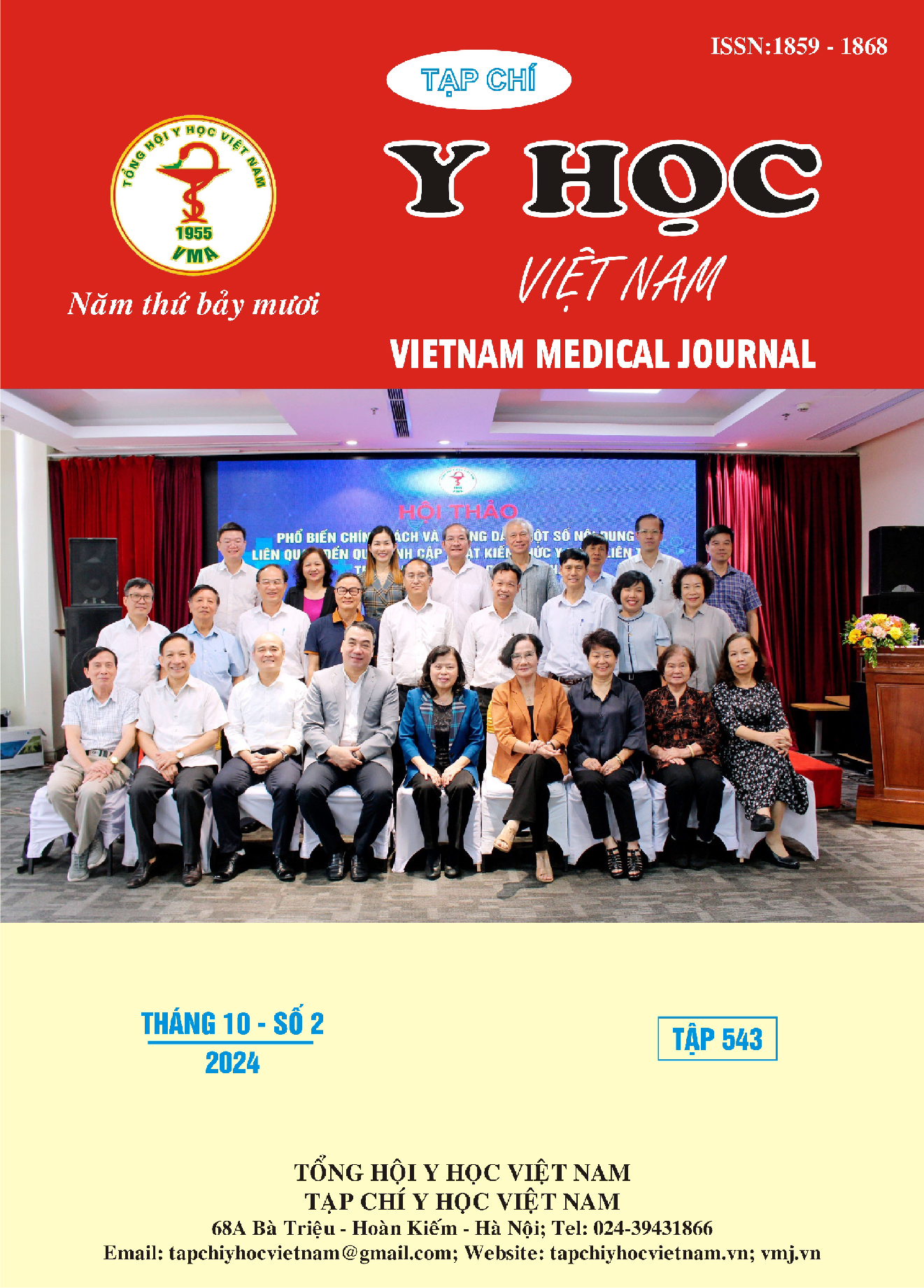CLINICAL AND SUBCLINICAL CHARACTERISTICS OF PATIENTS WITH DIFFUSE LARGE B-CELL LYMPHOMA OF BREAST
Main Article Content
Abstract
Objective: To describe the clinical and subclinical characteristics of patients with diffuse large B-cell lymphoma of breast (DLBCL). Subjects and methods: A descriptive study of 33 patients with breast DLBCL were treated at National Cancer Hospital from January 2019 to June 2024. Results: The average age of patients was 52 that commonly ranged from 41 to 60 (51,5%). 100% of the patients were female. The time of disease detection often was less than 3 months. The most common symptom was palpable painless breast mass (78,8%), additionally 9,1% had palpable axillary lymph nodes and 12,2% had pain or swelling breast; 24,2% had B symptoms. 48,5% had tumor in the right breast, 30,3% in the left breast and 21,2% in both breasts, with 21,2% bulky tumors. 27,2% of patients were anemia 100% of patients had no envidence of bone marrow invasion. B2-M increasing was found in 45,5%, and 15,2% had LDH increasing. Breast ultrasound: 90,9% showed hypoechogenicity, 60,6% had single mass, 97% had irregular borders. Mammography: 94,7% had increased breast density. 100% were diagnosed by hispathology (81,8% breast biopsy and 18,2% postoperative specimen): 90,9% were non-germinal center type and 69,7% had a high Ki67 index (>70%). NCCN-IPI was in the majority low and intermediate - low risk group, respectively 39,4% and 54,5%. Conclusion: Breast DLBCL commonly occurs in females at the age group of 41-60, was diagnosed within 3 months, with the most common symptom are palpaple painless mass in many areas of breasts. Most cases show hypoechogennocity in ultrasound and increased density on mammography. Hispathology is majority with non-germinal center type and a high Ki67 index. Most of patients are in the low and intermediate-low risk groups according to the NCCN-IPI.
Article Details
Keywords
Diffuse large B-cell lymphoma of breast, non-Hodgkin lymphoma, breast
References
2. Sun Y, Joks M, Xu LM, et al. Diffuse large B-cell lymphoma of the breast: prognostic factors and treatment outcomes. OncoTargets Ther. 2016;9:2069-2080. doi:10.2147/OTT.S98566
3. Cheah CY, Campbell BA, Seymour JF. Primary breast lymphoma. Cancer Treat Rev. 2014;40(8): 900-908. doi:10.1016/j.ctrv. 2014.05.010
4. Joks M, Myśliwiec K, Lewandowski K. Primary breast lymphoma – a review of the literature and report of three cases. Arch Med Sci. 2011;1:27-33. doi:10.5114/aoms.2011.20600
5. Sd R, M S, Z S, Km R, Mdc F, Vm D. Primary and Secondary Breast Lymphoma: Clinical, Pathologic, and Multimodality Imaging Review. Radiogr Rev Publ Radiol Soc N Am Inc. 2019; 39(3). doi:10.1148/rg.2019180097
6. Ganjoo K, Advani R, Mariappan MR, McMillan A, Horning S. Non-Hodgkin lymphoma of the breast. Cancer. 2007; 110(1):25-30. doi:10.1002/cncr.22753
7. Yoo C, Yoon DH, Suh C. Serum beta-2 microglobulin in malignant lymphomas: an old but powerful prognostic factor. Blood Res. 2014; 49(3): 148-153. doi:10.5045/ br.2014. 49.3.148
8. Yadav C, Ahmad A, D’Souza B, et al. Serum Lactate Dehydrogenase in Non-Hodgkin’s Lymphoma: A Prognostic Indicator. Indian J Clin Biochem. 2016; 31(2): 240-242. doi:10.1007/ s12291-015-0511-3


